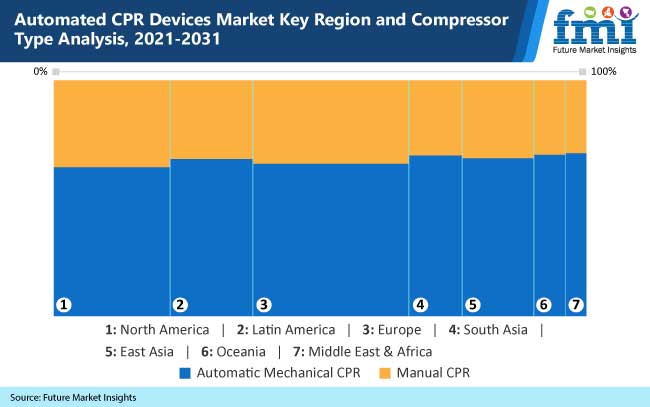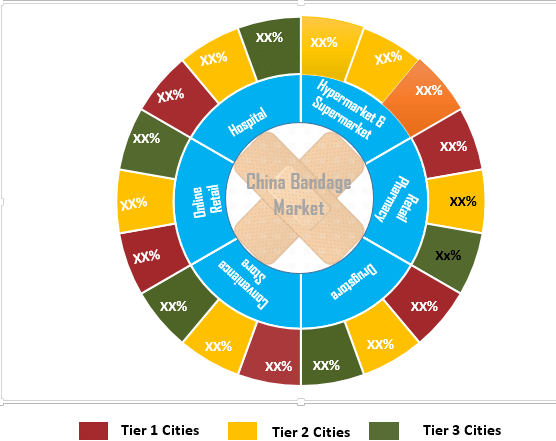The demand for automated CPR devices has been increasing significantly with rising prevalence of sudden cardiac arrest across the globe, according to ESOMAR-certified Future Market Insights’ (FMI) latest research report. As per the study, the global automated CPR devices market is slated to grow at approximately 13% CAGR throughout the forecast period from 2021 to 2031.
Major progress has been witnessed with 3D automatic CPR devices, especially when normal CPR device coupled with torso restraints providing vertical compression and high quality resuscitation.
Automated CPR devices experienced a surge in demand during the Covid-19 pandemic. COVID-19 infected heart patients were more susceptible to cardiac arrest in comparison with non infected patients. With rapid mutation of virus, the patients were facing higher risk of cardiac arrest.
The market is anticipated to grow significantly over the forthcoming decade, as majority of coronary and intensive care units are inclining towards automated CPR devices for its high effectiveness.
To remain ahead of your competitors, request for a sample – https://www.futuremarketinsights.com/reports/sample/rep-gb-720

Key Takeaways from FMI’s Automated CPR Devices Market Study
- Presence of modern healthcare infrastructure and high per capita income will bolster demand across the U.S.
- The U.K is expected to offer growth opportunities as governments and private organizations are working towards spreading awareness regarding dangers of cardiovascular diseases.
- Rising prevalence of obesity and high blood pressure which are precursor to cardiac arrest will increase automated CPR devices adoption across France.
- China will offer lucrative opportunities owing to increasing alcohol and tobacco consumption and developing healthcare infrastructure.
- India is expected to exhibit impressive market growth owing to increase in geriatric population and growing incidence of sudden cardiac arrest in the country.
“Rising consumer awareness regarding benefits of CPR devices and increasing adoption in EMT services will amplify sales of automated CPR devices during the forecast period,” says the FMI analyst.
Get a Tailored Made Report to Match Your requirements, Ask from Market Research Expert – https://www.futuremarketinsights.com/ask-question/rep-gb-720
Competitive Landscape
Automated CPR market is highly consolidated owing to presence of regional and global market players. Key market players in automated CPR devices market are focusing towards employing inorganic market strategies to expand their global foothold.
Inorganic strategies include strategic merger and acquisition and forming an alliance with regional distributors to strengthen their supply chain channels.
They are also emphasizing towards faster product approvals, product development and patenting. New market entrants are focusing on new product launches to establish their market presence.
For instance, Michigan Instruments launched hand-free automatic CPR device which is light weight, portable and helps in smooth transition from manual CPR to automated compressions.
ZOLL Medical Corporation introduced a new automated CPR devices system “Autopulse” which assists EMS personnel in providing high quality chest compressions in cramped spaces and steep down stairwells.
Prominent players operating in the automated CPR devices market are SunLife Science Inc., ZOLL Medical Corporation, Michigan Instruments, Physio Control Inc., Brunswick Biomedical Technologies, Zhuhai Kindway Medical Science & Technology Co. Ltd, CPR Medical Devices Inc., and Medtronic Inc.
In its latest report, FMI offers an unbiased analysis of the global automated CPR devices market, providing historical data for the period of 2016-2020 and forecast statistics for the period of 2021-2031. In order to understand the global market potential, its growth, and scope, the market is segmented on the basis of power source (pneumatically driven CPR devices, battery driven CPR devices, and mechanically actuated and battery driven CPR device), device type (piston devices, load distribution devices, and 3D compression devices) and end user for (Ems, hospitals, ambulances, coronary & intensive care units, cardiac catheterization labs, air med-evac units, and EMT rescue units) across North America, Europe, Latin America, Asia Pacific, and the Middle East and Africa.
Key Segments Covered
By Power Source
- Pneumatically Driven CPR Devices
- Battery Driven CPR Devices
- Mechanically Actuated And Battery Driven CPR Device
By Device Type
- Piston Devices
- Load Distribution Devices
- 3D Compression Devices
For in-depth insights, Download a PDF Brochure – https://www.futuremarketinsights.com/reports/brochure/rep-gb-720
By End User
- EMS
- Hospitals
- Ambulances
- Coronary & Intensive Care Units
- Cardiac Catheterization Labs
- Air Med-Evac Units
- EMT Rescue Units
- Others
Region
- North America
- Latin America
- Europe
- Asia Pacific
- Middle East and Africa
